If you need to learn more about Rowing Machines, then check out our long list of FAQ’s about Rowing Machines which should answer many of the possible questions that you may have about Rowing machines. Included in our FAQ’s list are questions about weight loss, toning, weight limits and various types of different rowing machines on sale both in retail and also online platforms. If you have a question that is not covered here, you can let us know in the comment box section at the end of this page.
50 FAQ’s about Rowing Machines
Q1, What are the benefits of using a rowing machine?
A, Using a rowing machine can improve cardiovascular fitness, strengthen the upper and lower body, improve flexibility and range of motion, and burn calories.
Q2, How does a rowing machine work?
A, A rowing machine uses a resistance mechanism, such as air, water, or magnetic, to simulate the resistance of rowing a boat. The user sits on a seat and pulls a handle attached to a chain or cord, which moves the resistance mechanism.
View also: Great Value Rowing Machines here
Q3, What is the difference between air, water, and magnetic resistance on a rowing machine?
A, Air resistance uses a flywheel to create resistance, water resistance uses paddles in a water tank, and magnetic resistance uses a magnet to create resistance. Air resistance provides the most realistic rowing experience, while water resistance provides a smoother, quieter ride. Magnetic resistance is usually more adjustable and quieter than air or water resistance.
Q4, What muscles does rowing work?
A, Rowing works the back, shoulders, arms, core, and legs.
Q5, How long should I use a rowing machine?
A, It depends on your fitness level and goals, but a good starting point is 20-30 minutes per session, three times per week.
Check out: Concept 2 Rowing Machine @ Amazon here
Q6, Is rowing machine good for weight loss?
A, Yes, rowing can be an effective way to burn calories and lose weight, especially when combined with a healthy diet.
Q7, Can I use a rowing machine if I have back pain?
A, It depends on the cause and severity of your back pain. It's best to consult with a healthcare professional before using a rowing machine if you have any concerns.
Q8, Is rowing machine good for toning my arms?
A, Yes, rowing works the muscles in your arms, including your biceps, triceps, and forearms.
Q9, Is rowing machine a low-impact exercise?
A, Yes, rowing is a low-impact exercise that is easy on the joints.
Q10, How loud are rowing machines?
A, It depends on the type of resistance mechanism. Air resistance rowing machines can be quite loud, while water resistance rowing machines are generally quieter.
Q11,What is a rowing machine?
A, A rowing machine is a piece of exercise equipment that simulates the motion of rowing a boat, providing a full-body workout.
Q12, Can I watch TV while using a rowing machine?
A, Yes, many people watch TV or listen to music while using a rowing machine.
Q13, How much space do I need for a rowing machine?
A, Rowing machines can vary in size, but a good rule of thumb is to allow at least 7 feet of clearance behind the machine and 3 feet on either side for comfortable use.
Q14, How much does a rowing machine cost?
A, Rowing machines can range in price from a few hundred dollars to several thousand dollars, depending on the type of resistance mechanism and features.
Q15, Are there any safety tips for using a rowing machine?
A, Always warm up before using a rowing machine, maintain proper form, start with a low resistance level and gradually increase, and never push yourself beyond your limits.
Q16, Can rowing machine help with posture?
A, Yes, rowing can help improve posture by strengthening the muscles in the upper back and shoulders.
Q17, Can I use a rowing machine if I'm pregnant?
A, It's best to consult with a healthcare professional before using a rowing machine if you're pregnant.
Q18, Can children use a rowing machine?
A, It depends on the child's age, size, and fitness level. It's best to consult with a healthcare professional before allowing a child to use a rowing machine.
Q19, How do I maintain my rowing machine?
A, Keep the machine clean and dry, regularly check and tighten
Q20, How do I choose the right rowing machine for me?
A, Consider your budget, available space, type of resistance mechanism, and features such as adjustable resistance levels, workout programs, and monitoring capabilities.
View also: Best Value Rowing Machines here
Q21, Can I use a rowing machine if I have knee pain?
A, It depends on the cause and severity of your knee pain. It's best to consult with a healthcare professional before using a rowing machine if you have any concerns.
Q22, How often should I replace the resistance mechanism on my rowing machine?
A, It depends on the type of resistance mechanism and how frequently you use the machine. Generally, air resistance machines may need to have their fan blades cleaned or replaced periodically, while water resistance machines may need to have their water changed or tank replaced after several years of use.
Q23, Can rowing machines be used for rehabilitation purposes?
A, Yes, rowing machines can be used for rehabilitation purposes, such as recovering from a knee or hip injury, as they provide a low-impact, full-body workout.
Q24, Are there any weight limits for using a rowing machine?
A, Yes, most rowing machines have a weight limit, which can vary from around 220 pounds to over 500 pounds, depending on the model. Check the manufacturer's specifications before purchasing a rowing machine.
Q25, How do I adjust the resistance level on my rowing machine?
A, Depending on the type of rowing machine, resistance can be adjusted by changing the setting on the resistance mechanism, adjusting the damper settings, or using a digital console. Consult the user manual for specific instructions.
Check out: JLL® R200 Rowing Machine @ Amazon here
Q26, Can rowing machines be used for competitive rowing training?
A, Yes, rowing machines can be used for competitive rowing training, as they provide a similar motion and resistance to rowing on the water.
Q27, How can I prevent blisters on my hands from rowing?
A, Make sure to use proper technique and grip the handle with a relaxed but firm grip. Consider wearing gloves or using grip tape to protect your hands.
Q28, How do I store my rowing machine?
A, Most rowing machines can be folded up and stored vertically to save space. Consult the user manual for specific instructions.
Q29, Can I use a rowing machine if I have a heart condition?
A, It's best to consult with a healthcare professional before using a rowing machine if you have any heart conditions or concerns.
Q30, How do I know if I'm using proper form on a rowing machine?
A, Proper form on a rowing machine involves keeping your back straight, engaging your core muscles, pushing with your legs, pulling with your arms, and smoothly transitioning between the phases of the rowing stroke. Consider consulting a trainer or watching instructional videos to ensure proper form.
Q31, Can a rowing machine help me lose weight?
A, Yes, rowing machines can be an effective tool for weight loss as they provide a full-body workout that burns calories and increases muscle mass.
Q32, How long should I use a rowing machine to see weight loss results?
A, The amount of time it takes to see weight loss results on a rowing machine will vary depending on factors such as frequency of use, intensity of workouts, and diet. It's recommended to aim for at least 30 minutes of rowing per day, at least 3-4 times a week, in conjunction with a healthy diet for optimal weight loss results.
Q33, Can I use a rowing machine if I have back pain?
A, It depends on the cause and severity of your back pain. Rowing machines can provide a low-impact, full-body workout that can be gentle on the back, but it's best to consult with a healthcare professional before using a rowing machine if you have any concerns.
Q34, How can I prevent lower back pain when using a rowing machine?
A, Make sure to use proper form, engaging your core muscles and keeping your back straight throughout the rowing stroke. Consider consulting a trainer or watching instructional videos to ensure proper form. Starting with shorter, less intense workouts and gradually increasing the intensity and duration can also help prevent lower back pain.
Q35, How do I clean and maintain my rowing machine?
A, Consult the user manual for specific instructions on how to clean and maintain your rowing machine. Generally, wiping down the machine after each use, regularly cleaning the resistance mechanism, and keeping the machine dry and free of dust and debris can help maintain the machine's longevity.
Q36, How can I make my rowing machine workouts more challenging?
A, Increasing the resistance level, adjusting the damper settings, incorporating interval training, or increasing the duration or intensity of your workouts can make your rowing machine workouts more challenging.
Q37, Can I use a rowing machine for upper body workouts only?
A, While rowing machines primarily work the legs, back, and core, they also provide a significant upper body workout. However, for specific upper body workouts, other exercises may be more effective.
Q38, Can rowing machines help improve cardiovascular health?
A, Yes, rowing machines can be an effective tool for improving cardiovascular health as they provide a full-body, low-impact workout that can increase heart rate and improve overall cardiovascular fitness.
Q39, How do I incorporate rowing machine workouts into my overall fitness routine?
A, Incorporating rowing machine workouts into your overall fitness routine can help provide variety and target different muscle groups. Consider alternating rowing machine workouts with other forms of cardio or strength training, and gradually increasing the intensity and duration of your rowing workouts.
Q40, Can rowing machines help improve posture?
A, Yes, rowing machines can help improve posture by strengthening the muscles in the back, core, and shoulders that support good posture. Proper form on the rowing machine also involves keeping the back straight, which can help reinforce good posture habits.
View also: Low priced Rowing Machines here
Q41, What are the benefits of using a rowing machine with a pulley system?
A, Rowing machines with pulley systems provide smoother and more consistent resistance, making for a more comfortable and effective workout. They can also provide a wider range of resistance levels for more versatile workouts.
Q42, How do I maintain the pulley system on my rowing machine?
A, Consult the user manual for specific instructions on how to maintain the pulley system on your rowing machine. Generally, keeping the pulleys clean and lubricated, and checking for any wear or damage, can help maintain the longevity and performance of the machine.
Q43, What are the benefits of using a rowing machine with a fan resistance mechanism?
A, Rowing machines with fan resistance mechanisms provide a natural resistance that mimics the feeling of rowing on the water. They can also provide a cooling breeze during workouts and tend to be more durable and long-lasting.
Q44, How do I maintain the fan on my rowing machine?
A, Consult the user manual for specific instructions on how to maintain the fan on your rowing machine. Generally, cleaning the fan blades regularly and checking for any signs of wear or damage can help maintain the longevity and performance of the machine.
Q45, Can I use a rowing machine without electricity?
A, Yes, most rowing machines do not require electricity and can be operated purely by the user's manual effort.
Check out: JTX Freedom Rowing Machine @ Amazon here
Q46, What are the benefits of using a rowing machine with a power monitor?
A, Rowing machines with power monitors can provide a more accurate and comprehensive view of your workout, including data on power output, distance, speed, and calories burned. This can help you track your progress and set and achieve fitness goals.
Q47, How do I maintain the power monitor on my rowing machine?
A, Consult the user manual for specific instructions on how to maintain the power monitor on your rowing machine. Generally, keeping the monitor clean and free of dust and debris, and replacing batteries as needed, can help maintain its functionality.
Q48, Can rowing machines be used by people of all fitness levels?
A, Yes, rowing machines can be used by people of all fitness levels, from beginners to advanced athletes. The resistance level can be adjusted to accommodate different fitness levels, and proper form can be learned through instruction and practice.
Q49, How do I warm up and cool down properly before and after using a rowing machine?
A, A proper warm-up before using a rowing machine can involve light cardio, dynamic stretching, and practicing the rowing motion at a slower pace. A cool-down after using the machine can involve static stretching and gentle movement to gradually lower heart rate and prevent injury.
Q50, Can I use a rowing machine for endurance training?
A, Yes, rowing machines can be used for endurance training, as they provide a full-body, low-impact workout that can be sustained for longer durations. Gradually increasing the duration and intensity of your rowing workouts can help improve endurance over time.
View also: Popular Budget Rowing Machines here
Community Feedback
Do you have any other questions about Rowing Machines that are not covered in our list? If possible, please let us all know by leaving a comment in the comment box section provided below – so that others in the wider fitness community can learn also…




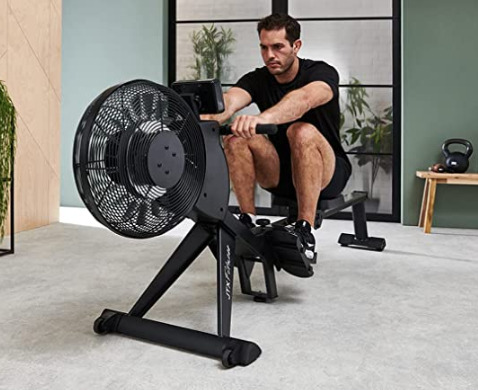

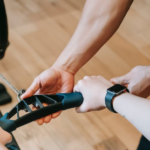

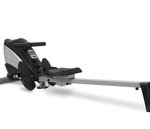


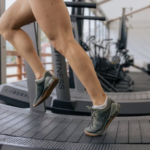
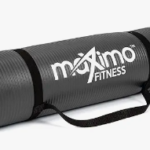
Recent Comments